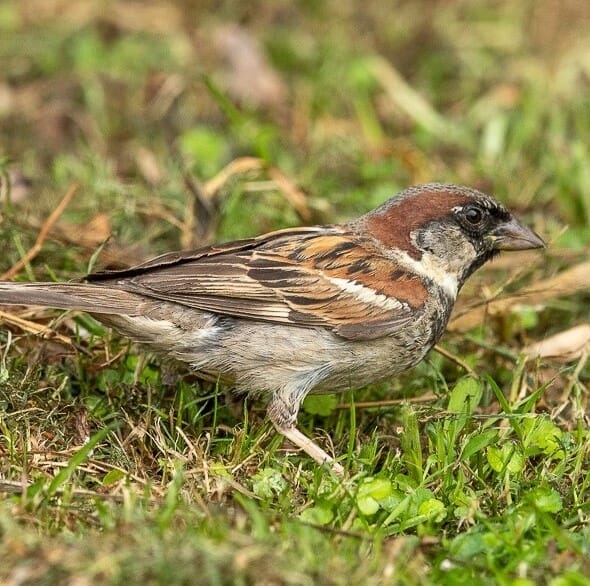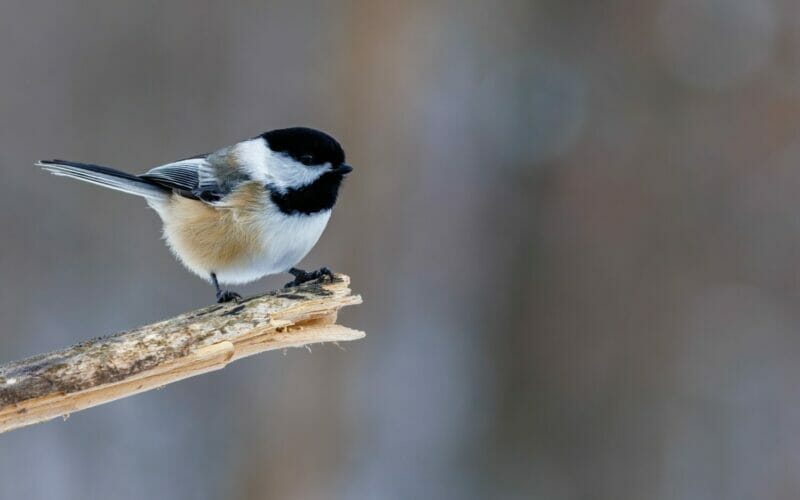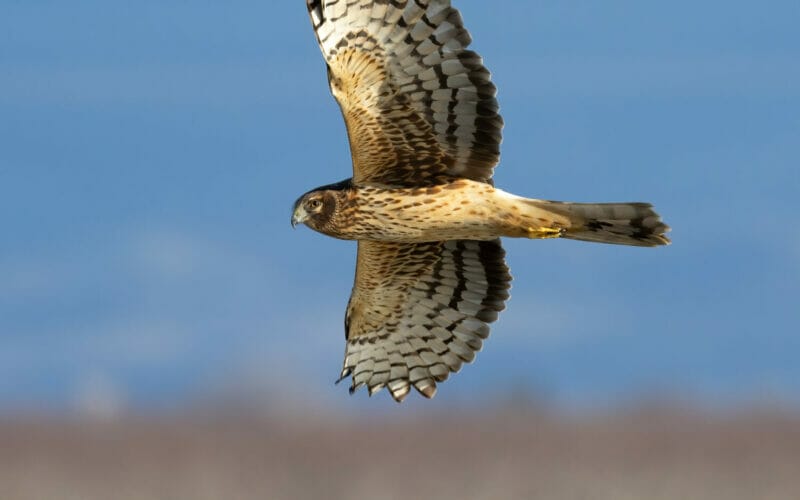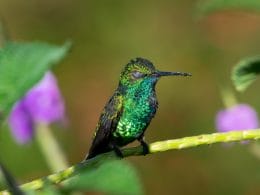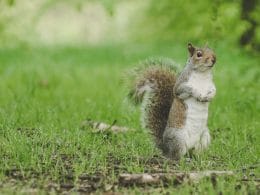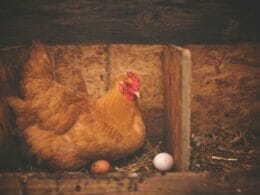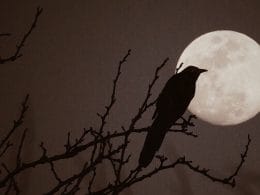The House Sparrow is one of the most common birds in the whole world. Originally from Europe and Asia, it is now found in every country, except for the cold tundra of the Arctic and Antarctic. It is often overlooked, viewed with contempt or discounted, but really it should be celebrated as one of the most successful animals in history. In this post we will investigate all things House Sparrow and in particular look at how they breed.

What is a House Sparrow?
The humble House Sparrow (Passer domesticus) is a small songbird found in most places that humans inhabit. It is a cheerful and active bird and if you can hear chirping in the background that goes on all day, chances are you are hearing the House Sparrow. It is a bird that is easy to overlook with its brown plumage blending in to the background.
House Sparrow Facts
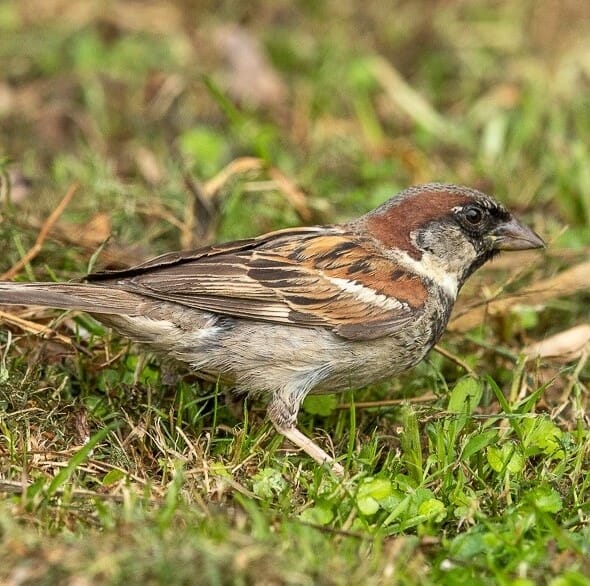

Identification
The male sparrow is a combination of rich browns with black on the face (extends down the throat in breeding time). Dark brown on the head blends into paler brown on the wings with smudgy white and dark brown bars. The female is more uniformly pale brown with darker markings on the wing.
Size
Length: 5.9 – 6.7 inches
Wingspan: 7.5 – 9.8 inches
Weight: 0.9 – 1.1 ounces
Distribution

eBird now distinguishes between native and non-native birds. Areas marked with purple are where the bird is naturally found. The orange denotes exotic species. These could be introduced and naturalized (as with the House Sparrow) or escapees. As can clearly be seen, the House Sparrow is now present everywhere in the world that has a temperate climate. Where it is found, it is abundant. However, it does prefer urban, suburban and parklands rather than remote or thickly forested areas.
Call
Diet
The House Sparrow loves seeds and will find them in grasses or bird feeders. It will also eat insects during the breeding season. Part of its success is that is has become an opportunistic feeder and will take what is on offer. As it inhabits mainly urban areas, it has learned that humans mean food!

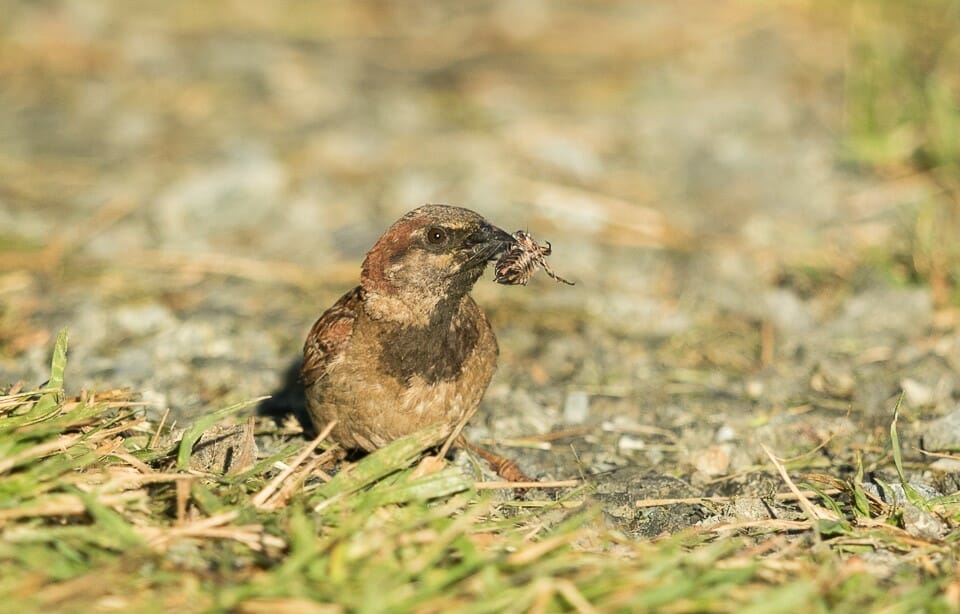

Behavior
The House Sparrow is a confident little bird and not afraid to stake a claim. Smart enough to avoid trouble whether that be human, avian or mammalian, it can stand up for itself (see image above of a female being aggressive to a Greenfinch on the feeder), or take evasive action!
This gregarious sparrow is often seen in small groups and these social relationships seem to be an important part of their lives. They will interact frequently as seen below.
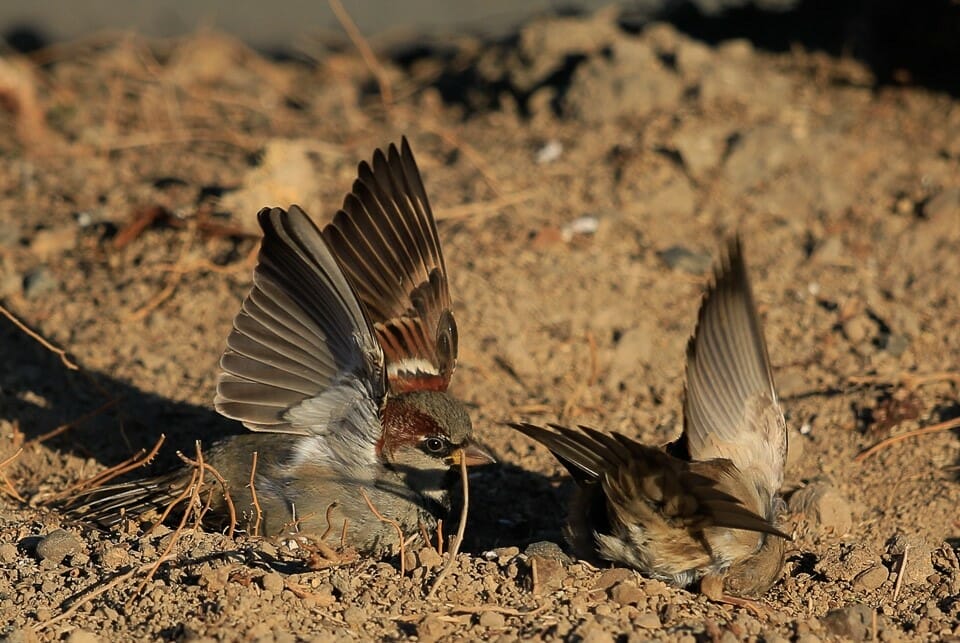
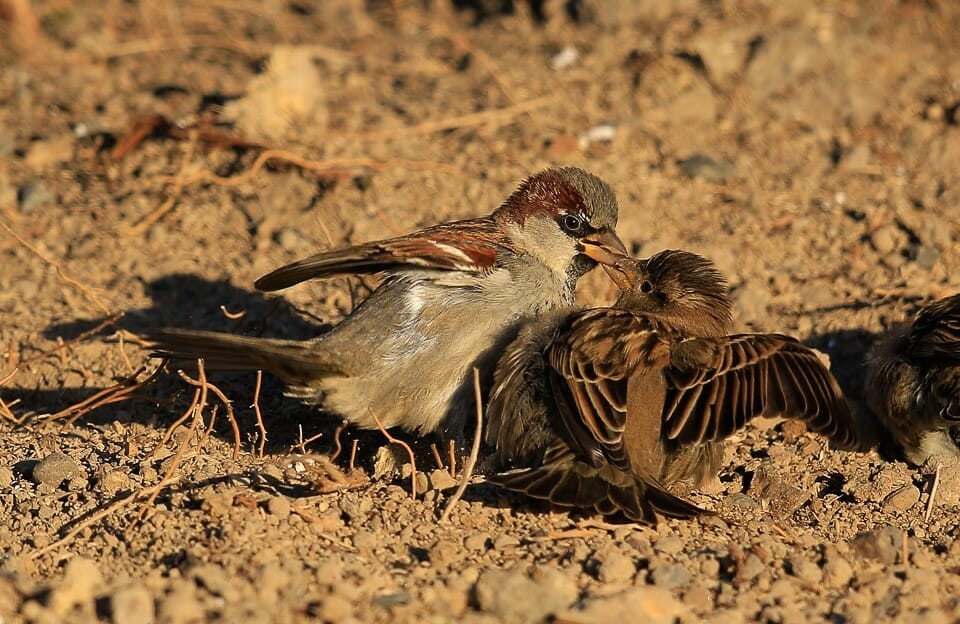
The House Sparrow loves a good bath! It can be dust or water but they will regularly visit bird baths and in the drier months or in arid areas, a dust bath will suffice.


Breeding
Courting
The male House Sparrow is fascinating when in courtship. Firstly, his plumage becomes more pronounced. The male in the photo below is showing the black throat and bib now stand out.
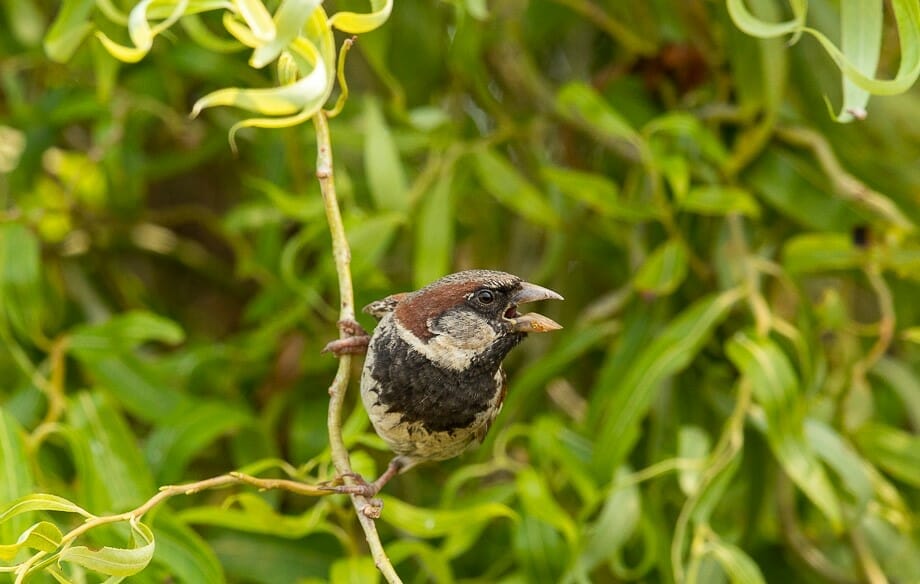
As he tries to attract a female, he will engage in some very formal behavior which involves bowing and hopping around her.
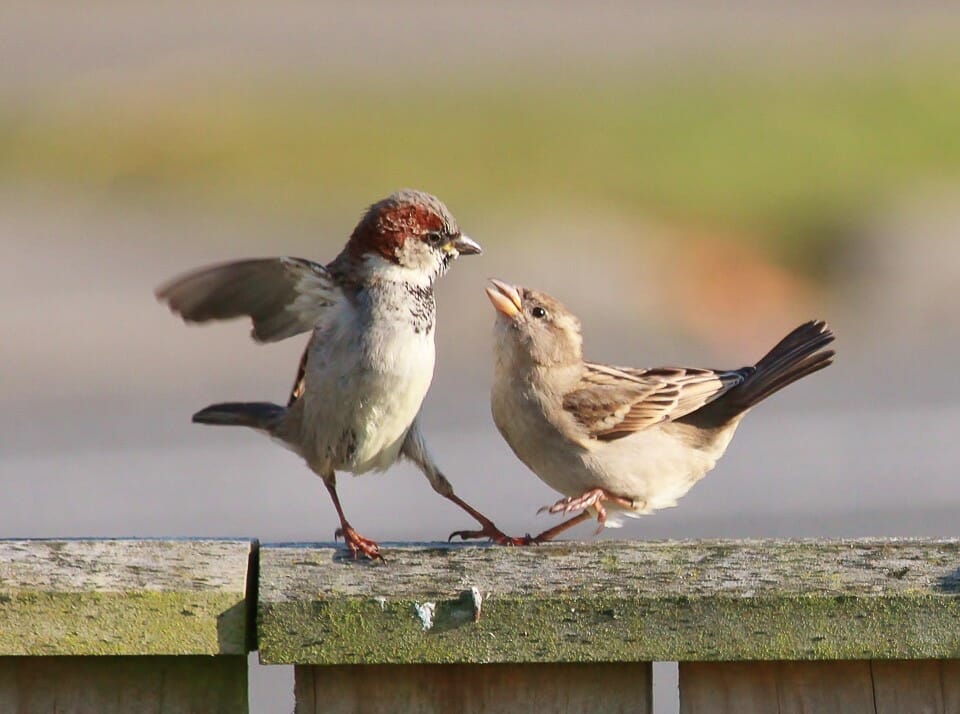
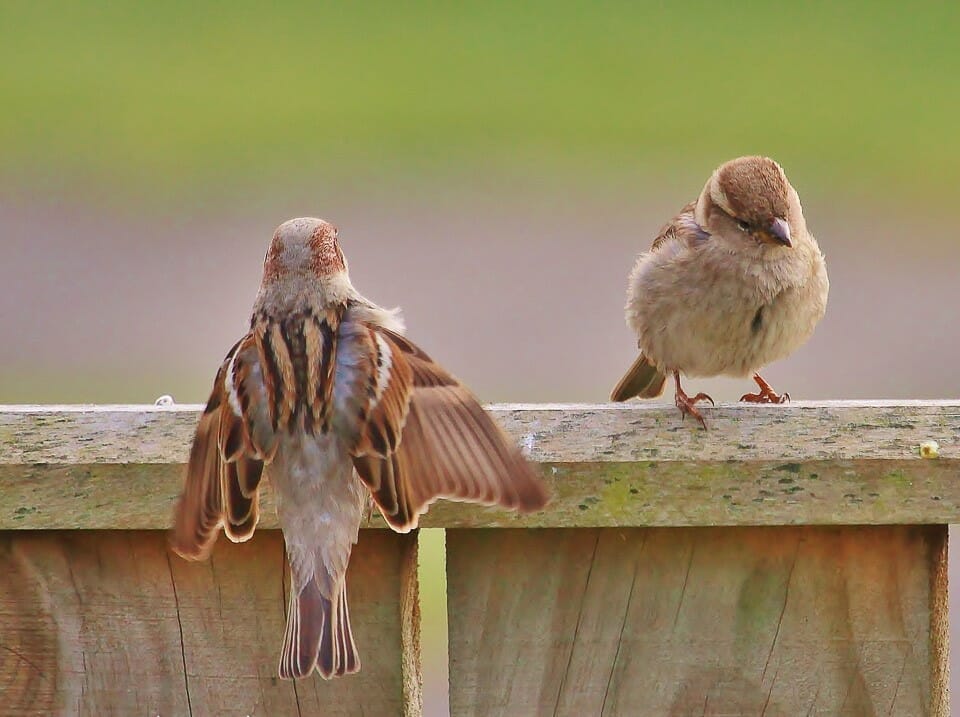
The timing of breeding and the amount of times these sparrows breed largely depends on where they are in the world and what the climate is. However, they are most likely to breed several times a year.
Nesting
House Sparrows are very adaptable when it comes to nesting. They will use old nests, trees and man made structures in which to create their new nest. In the image below, they have chosen to nest in some old metalwork.
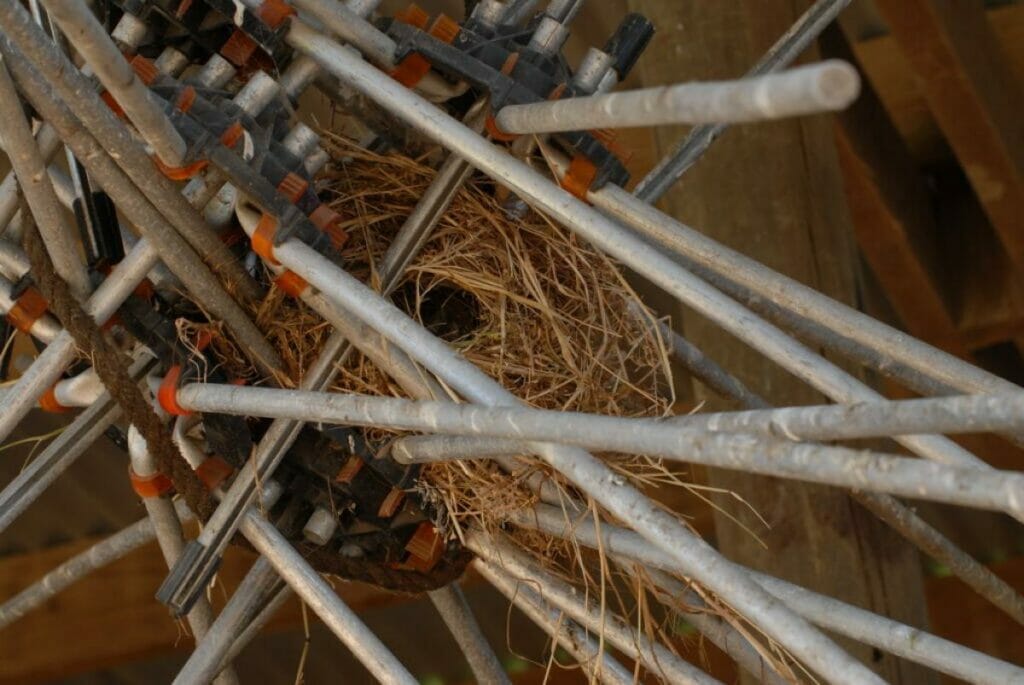
The male starts to build the nest as a cup shape made with dried material and any suitable man-made fibers they can find. If they are nesting in the open, as opposed to a box or cavity, the nest starts as a cup shape. The female will participate in building once it is started and between them, the cup is tilted and built around until it is covered with an entrance hole.
Eggs
House Sparrow eggs are relatively long and oval. They are speckled but the color can range from off-white to green or blue. They are around 0.6 – 0.8 inches in diameter. The female will lay between 4 and 6 eggs.
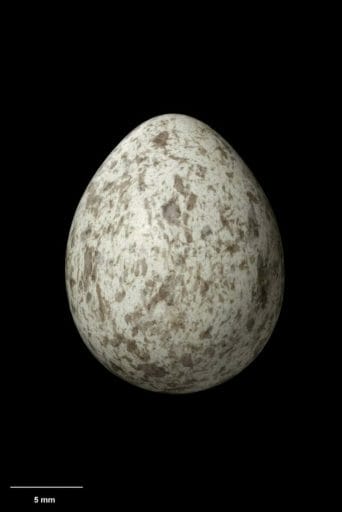
Incubation and Nestlings
The male helps incubate the eggs and sits on them longer as time goes on. Incubation ranges from 10 to 14 days.
The hatchlings are bald and red which quickly fades to pink or pinky gray after a few hours. The female will teach them to beg for food by touching them to stimulate opening the gape. After that, the nestlings will learn to recognize when a parent is entering the nest as the hole darkens and will begin to beg.
Fledglings
After sustained feeding by both parents, the growing chicks have feathers and have increased in size. They will leave the nest at around 14 days, usually by falling out of it. During breeding periods, it is not usual at all to find young sparrows on the ground in gardens and parks.

As seen in this image, the fledgling still has an obvious gape and a short tail. The parents will remain close by and very often groups of House Sparrows will work together and it is not unusual for siblings or non-parental birds to feed the fledglings. The young birds will flutter their wings to the group to indicate they want to be fed. They are totally independent after 7 to 10 days but may still remain in this bigger group of birds.
House Sparrows in the United States
Introduced from Europe
House Sparrows were taken all over the world by European settlers. This was either to remind them of home or for a specific purpose. They were brought to the U.S. in order to feed off and remove insects. As happened around the globe, it didn’t work out that way. The adaptable sparrow quickly drove away native songbirds and plagued farmers by eating seed.
House Sparrows Outlawed!
In the late 1800s some states made them outlaws! A drive was on to catch and kill as many House Sparrows as possible to try to restore the balance. Other states put a bounty on them, paying 2 cents for the head of each bird. Millions were killed but these resilient little birds survived and thrived. It is still legal in some states to kill House Sparrows.
Deterring House Sparrows
There is no doubt that the presence of House Sparrows has an impact on other birds. Where they take resources and nesting space, native birds may lose out. There are ways to deter them.
- Don’t put out nesting boxes too close to your house. Remember that sparrows like humans.
- If you find House Sparrows are in a nest box, seal up the entrance.
- Put out good quality bird food on your feeders. House Sparrows are attracted to generic bird seed. If you use things like Njer seed, it may discourage the sparrows.
- Do not put out breadcrumbs or other scraps as they are sure to attract House Sparrows.
There are other methods of trapping sparrows but we won’t look at them here. The bottom line is that nuisance as they may be, it is not their fault that they are in the wrong place. It is ours!
Conclusion
That is all about House Sparrows. They are determined and resilient and despite all our efforts, they thrive around the world. Whether you view them as a pest or a backyard delight, you must appreciate their social nature and beautiful birdsong.
FAQ
House Sparrows are invasive simply because humans create an environment for them to survive. Just as some species are decimated by loss of habitat, the opposite is true. Some birds thrive on how we organize our society and grow food.
Ever heard the saying ‘familiarity breeds contempt’? That is how a lot of us feel about sparrows. But take a step back and try to look at the lovely little bird as if for the first time. It is sociable, attractive, lovely to listen to and entertaining to watch.
Yes, they are. Unlike other sparrow species, the House Sparrow is confiding and loves being around humans for reasons we have outlined. If they are resident in your garden, they will get used to having you around.
Yes, they are good for your garden. As seed eaters, they will forage on the ground and eat the seeds of weeds for you.




